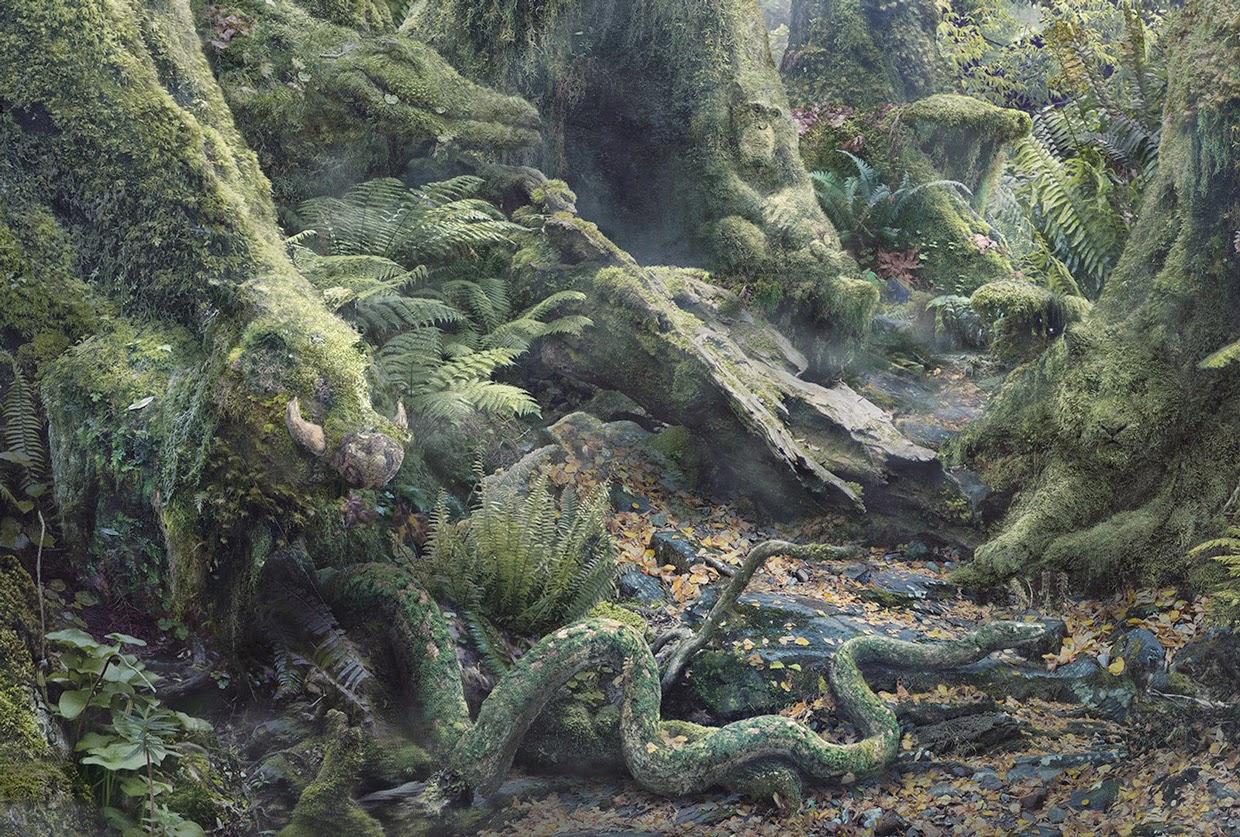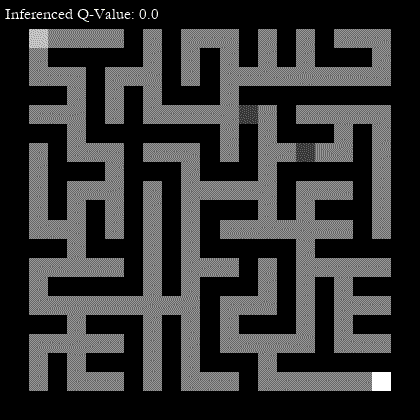Introduction
Welcome, curious minds, to the enchanting realm of Machine Learning! In this captivating blog post, we embark on an exhilarating adventure through the vast landscapes of algorithms, data, and intelligence. Prepare to be spellbound as we unravel the secrets of this captivating field, sprinkling wit and humour along the way. So, fasten your seatbelts, because we're about to dive into the world of Machine Learning!
The Art of Machine Learning
In this blog, we'll paint a vivid picture of what Machine Learning truly is. Imagine a world where computers learn and adapt, making decisions and predictions without explicit programming. Sounds magical, right? Machine Learning is the art of teaching computers to mimic human-like learning capabilities, utilizing algorithms to uncover patterns and insights hidden within vast amounts of data. It's like giving machines the power to understand and act upon the world around them.
The Magic Spells of Machine Learning
Here, we'll explore the fundamental concepts of Machine Learning: supervised learning, unsupervised learning, and reinforcement learning. But hold on! Before diving into these realms, let's take a moment to appreciate the lighter side of this enchanting journey.

Why did the machine bring a ladder to the magic show? Because it heard the magician needed a "data step"!
Supervised Learning
Supervised Learning is like having a wise mentor guiding the learning process. It involves training a model using labelled data, where inputs and desired outputs are known. The model learns from this guidance and becomes proficient at predicting outcomes for unseen data. It's like a wizard-in-training mastering spell with the help of an experienced sorcerer.
Given below is a code snippet of a simple supervised learning algorithm using Python's scikit-learn library to classify iris flowers based on their features using KNN.
# Import necessary libraries
from sklearn.datasets import load_iris
from sklearn.model_selection import train_test_split
from sklearn.neighbors import KNeighborsClassifier
from sklearn.metrics import accuracy_score
# Load the Iris dataset
iris = load_iris()
# Split the data into training and testing sets
X_train, X_test, y_train, y_test = train_test_split(iris.data, iris.target, test_size=0.2, random_state=42)
# Create a k-nearest neighbors classifier
knn = KNeighborsClassifier(n_neighbors=3)
# Train the classifier on the training data
knn.fit(X_train, y_train)
# Make predictions on the testing data
y_pred = knn.predict(X_test)
# Calculate the accuracy of the model
accuracy = accuracy_score(y_test, y_pred)
print("Accuracy:", accuracy)
The code uses scikit-learn library to train a k-nearest neighbours classifier on the Iris dataset. It splits the data into training and testing sets, predicts the labels for the testing data, and calculates the accuracy of the model. The result demonstrates a simple supervised learning algorithm for classifying iris flowers based on their features.
By the way, did you know that the Iris flower isn't just a pretty face in the botanical world? It also plays an essential role in the enchanting realm of Machine Learning! Have you ever had the pleasure of exploring the fascinating Iris dataset that's often used to teach machines the art of classification?
Machine Learning is like teaching a child how to ride a bicycle. Once they learn, they can take off on their own. - François Chollet
Unsupervised Learning
Ah, Unsupervised Learning, is the magical realm of discovering hidden patterns and structures without explicit labels. It's like exploring a mysterious forest without a map or a guide. Unsupervised learning algorithms extract valuable insights from unlabeled data, unveiling hidden gems and forming clusters that reveal the underlying structure.
Step-by-Step Guide to Unsupervised Learning:
Enter the Mysterious Forest: Unsupervised learning is like stepping into a mysterious forest without a map or a guide. You're presented with a dataset that lacks explicit labels or predefined categories. It's a thrilling journey of exploration, where the goal is to uncover hidden patterns and structures lurking within the data.
Embrace the Unknown: Unlike supervised learning, where the algorithm is provided with labelled data for training, unsupervised learning algorithms work with unlabeled data. This means the algorithm has no prior knowledge or guidance about the data's underlying structure, making the adventure all the more captivating.
Extracting Insights: Armed with a sense of curiosity, unsupervised learning algorithms embark on the quest to extract valuable insights from the data. They employ various techniques to identify patterns, similarities, and differences within the dataset.
Clustering Magic: One of the most powerful tools in the unsupervised learning arsenal is clustering. Imagine stumbling upon hidden clearings in the forest, where similar entities gather together. Clustering algorithms group data points that exhibit similar characteristics, forming clusters that reveal the underlying structure of the dataset.
Insert image of clustered data points forming distinct groups within the forest
Unveiling Hidden Gems: Unsupervised learning can also uncover outliers and anomalies within the dataset. These are the rare and unique gems that stand out amidst the ordinary. By identifying these exceptional data points, unsupervised learning algorithms shed light on irregularities or abnormalities that may be of great interest in various applications.
Dimensionality Reduction: Another valuable technique in unsupervised learning is dimensionality reduction. Think of it as finding a condensed map of the forest, highlighting the most critical features while eliminating unnecessary noise. Dimensionality reduction algorithms simplify complex datasets by reducing the number of variables, making subsequent analysis and visualization easier.
Insert code snippet showcasing dimensionality reduction using Principal Component Analysis (PCA)
Real-world Applications: Unsupervised learning finds its place in numerous real-world applications. For instance, in customer segmentation, it can help businesses identify distinct groups of customers based on their behaviours and preferences. In anomaly detection, it can flag suspicious activities in cybersecurity. It's even used in recommendation systems to suggest similar items based on user behaviour.
Endless Exploration: The beauty of unsupervised learning lies in its boundless exploration. With each dataset, there's a new forest to wander through, discovering unique patterns and insights. It continues to be a captivating field, pushing the boundaries of our understanding and challenging us to unravel the mysteries hidden within the data.
Remember, in the realm of unsupervised learning, the forest is vast, and the possibilities are endless. Prepare to be amazed as unsupervised learning algorithms unleash their magic to uncover hidden treasures within the data.

What do you call a machine-learning algorithm that loves puns? A "Clustering Enthusiast"!
Reinforcement Learning
Enter the world of Reinforcement Learning, where machines learn by interacting with their environment and receiving rewards or punishments. It's like teaching a pet dog new tricks through a series of trials and rewards. Reinforcement learning algorithms excel at making sequential decisions and optimizing actions to maximize cumulative rewards.
Reinforcement Learning (RL) is like teaching a pet new tricks through trials and rewards. Let's explore RL using a maze example:
Imagine you have a pet rat named Remy, and you want to train him to navigate through a maze to find a piece of cheese. Here's how RL works in this scenario:
The Maze Environment: The maze serves as the environment where Remy will learn and make decisions. It consists of walls, pathways, and, of course, the prized cheese at a specific location.
Agent and Actions: Remy is the RL agent who learns to navigate the maze. At each point in the maze, Remy can take specific actions, such as moving up, down, left, or right.
Rewards and Punishments: To train Remy, we assign rewards and punishments based on his actions. Remy receives a positive reward when he moves closer to the cheese and a negative reward (or punishment) for hitting a wall.
Q-Table: Remy maintains a Q-table, which is a table of action-value pairs. Each entry in the table represents the expected future reward for a specific action in a particular maze state.
Exploration and Exploitation: Initially, Remy explores the maze by taking random actions to learn about the rewards associated with each state-action pair. This is the exploration phase. As Remy gains knowledge, he starts exploiting the learned information to make optimal decisions.
Learning Process: Remy's Q-table gets updated iteratively as he explores the maze. He learns to choose actions that maximize his cumulative rewards over time. The Q-values are updated using a learning algorithm called Q-learning, which takes into account the immediate rewards and the expected rewards in the next state.
Converging to Optimal Policy: Through repeated iterations, Remy learns the optimal policy, which is the best sequence of actions to take in each maze state. The optimal policy guides Remy to navigate the maze efficiently, reaching the cheese while avoiding walls.
Maze Mastery: With time and training, Remy becomes an expert in navigating the maze. He can find the cheese quickly, even in new, unseen mazes, by relying on the learned optimal policy.
Reinforcement Learning allows Remy to learn from experience, adapt to different situations, and optimize his actions to maximize rewards. This concept of trial and error, coupled with rewards and punishments, forms the basis of reinforcement learning in a variety of real-world applications.

In Reinforcement Learning, you're not just creating an AI. You're raising one.
- Pieter Abbeel
Conclusion
As we bring our journey to a close, we hope you've caught a glimpse of the captivating world of Machine Learning. Remember, the magic lies in the algorithms, the data, and the ability to make machines learn from experience. With a touch of humour and a pinch of creativity, we've revealed the essence of this awe-inspiring field. So go forth, embrace the magic, and let the world of Machine Learning unfold before you!

Happy learning and may your algorithms always be enchanting!

